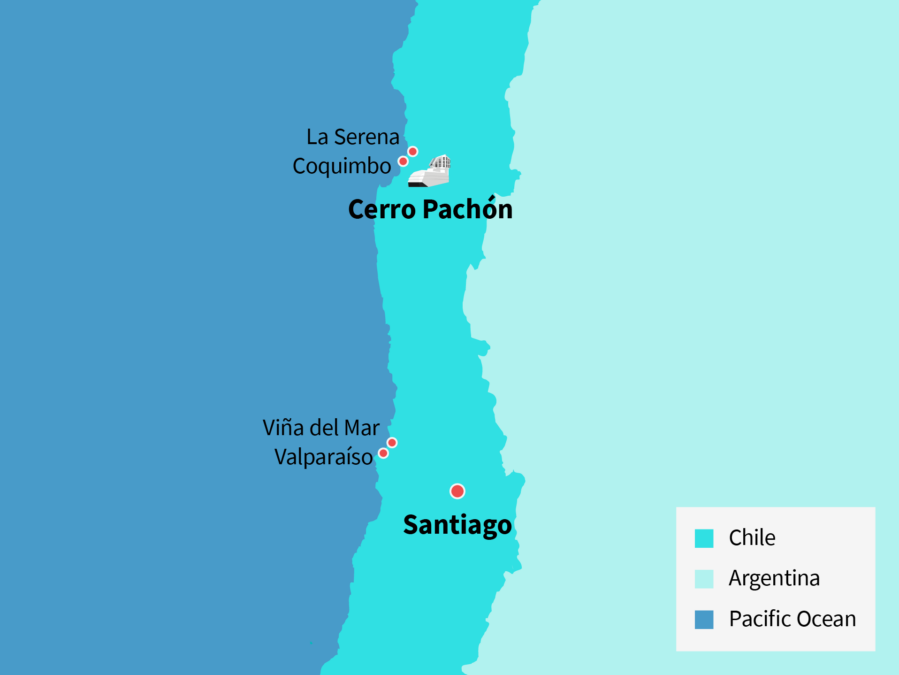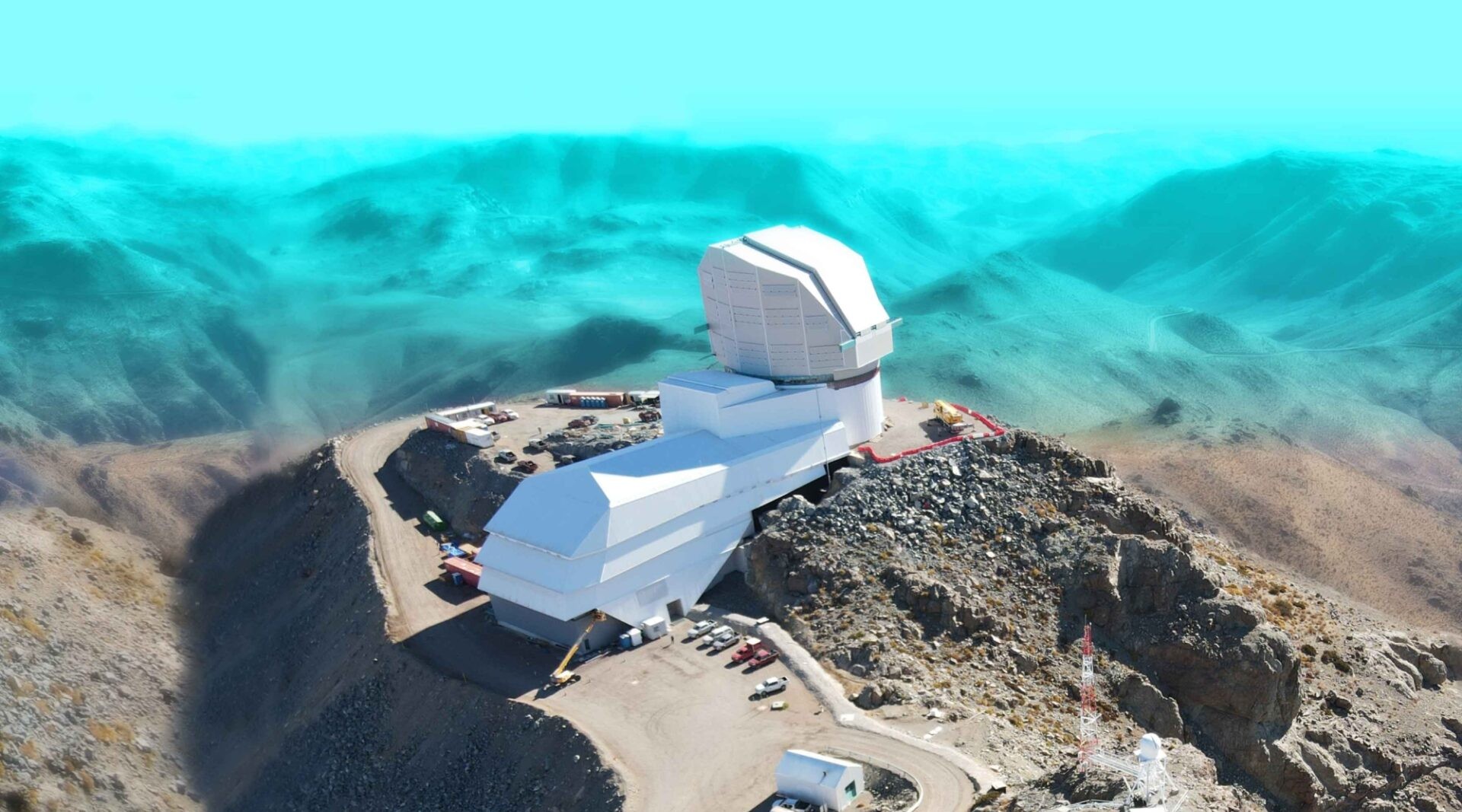Observatory Site Selection
Rubin Observatory is located in Chile, on top of a mountain named Cerro Pachón. This site was determined to be the most suitable place in the world for the observatory, after a lengthy site selection process. So how did scientists choose Cerro Pachón as the home for this big ground-based telescope? There were a few factors they had to consider.
What factors went into choosing Rubin's site?
First, the site had to be high. The earth’s atmosphere distorts the light we see from astronomical objects, so getting above more layers of the atmosphere means clearer images overall. Space telescopes are lucky enough to avoid the atmosphere all together, but ground-based telescopes don’t have that luxury. Being high up on a mountaintop is the next best thing.
Second, the site had to be dry. Moisture or humidity can lead to unstable air, which in turn means blurry images. Dry locations are more suitable for telescopes because the air tends to be more stable. As a bonus, dry locations also tend to have fewer rainy days, which leaves more time for observing!
Third, the site had to be remote...but not TOO remote. Light from populated areas can be a problem for telescopes; the glow interferes with the light coming from space. It’s better to place a telescope far away from cities or other major sources of light. On the other hand, if an observatory is too far away from developed areas it can be hard to get equipment to the site or entice people to work there. Rubin's ideal site had to have enough infrastructure (roads, power lines, etc.) to support building and operating a big astronomical facility.
There were other important criteria to think about too: whether an area was prone to natural disasters or extreme weather, or whether it had cultural significance to Indigenous peoples—many factors had to be thoughtfully considered.
Choosing our site
Selecting the site at Cerro Pachón was a three-year process that began in 2003. It was carried out by a team of experts who understood that in order to be successful, Rubin Observatory would need to be located in one of the best telescope sites in the world. In order to meet its cost and schedule goals, the selection committee focused on existing telescope sites in the Americas and Europe, and quickly narrowed its selection to four locations so that comprehensive studies of each site could be reasonably carried out. The four sites investigated were Cerro Pachón and Las Campanas in Chile, San Pedro Mártir in Mexico, and La Palma in Spain.
In 2005, based on the results of in-depth analysis of the atmospheric conditions and the quality of astronomical “seeing” at these four sites, the committee further narrowed down this list to two sites: San Pedro Mártir in Mexico and Cerro Pachón. After reviewing detailed proposals from both sites, Rubin Observatory invested in detailed geotechnical and environmental studies of both locations. Results indicated that Rubin Observatory could be built more cost-effectively in Cerro Pachón, so that site was the winner!
Cerro Pachón, with its existing infrastructure, access to fiber optic links, and high number of clear nights each year, is an ideal site for a revolutionary observatory like Rubin Observatory.


